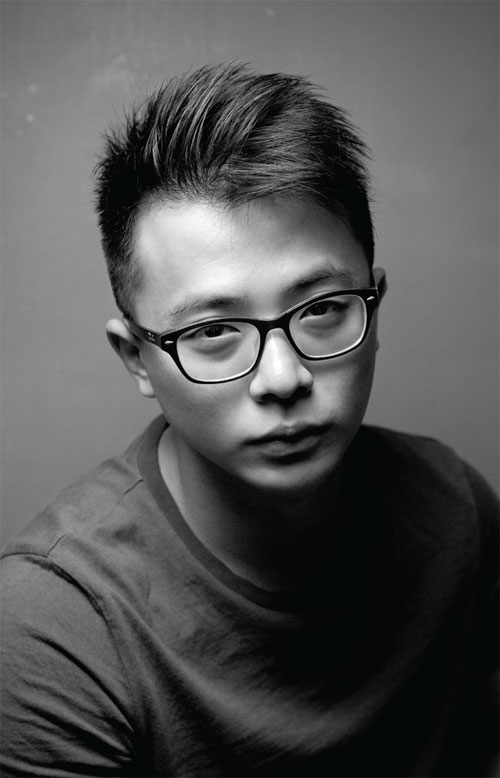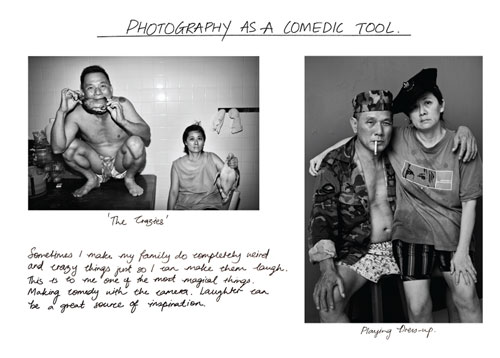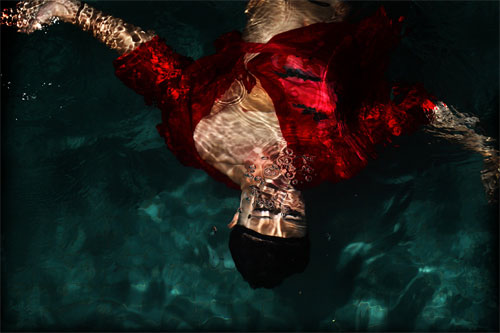Sean Lee scores big with his win at the ICON de Martell Cordon Bleu Photography contest.
Contributed By Reuel Eugene Tay
It’s the Oscars of photography in Singapore, the local photographer’s dream. The winner of the ICON de Martell Cordon Bleu walks away with S$30,000 in prize money, gets his art book published by Nanyang Academy of Fine Arts, and is awarded an all-expenses-paid trip to Cognac, France. Sean Lee, 25, a commercial photographer and photography instructor beat out eight other finalists including heavyweights like John Clang and Zhao Renhui to clinch this coveted prize.
In its second year now, the annual ICON de Martell Cordon Bleu seeks to recognize Singapore’s most outstanding photographers, elevating them to role models for promising young photographers. The contest was judged by an outstanding internationally acclaimed panel including Simon Bainbridge, the editor of the time-honored British Journal of Photography, and French independent photography curator, Agnes de Gouvion Saint-Cyr.
In his first exhibit entitled “Method”, Lee plays the duo role of photographer and subject. The production of this exhibit spanned a total of three years, and took Lee in and out of Cambodia dressed as a transsexual named Shauna. The exhibit presented images from Shauna’s world and her perspective.
Lee explained, “I was intrigued by transsexuals but did not want to create a documentary on them. I wanted to challenge myself by placing myself to some degree in their shoes, and so I became the subject of my own work.” Adopting their makeup, clothes and accessories, Lee spent a lot of time with transsexuals, emulating their moves and hanging out with them at bars and clubs.
“I wanted to get into character, to experience what it was like and also spare myself as little as possible in the process—within reasonable boundaries.” Lee became friends with many of the transsexuals in Cambodia as well as in Singapore, bringing one of them to City Harvest Church services a few times.
In his second exhibit titled “Homework”, Lee explores the theme of family and spirituality. The idea came to Lee during his days at CHC’s School of Theology in 2010. “I come from a traditional Chinese family that is not very affectionate. After Bible school ended, I proceeded to make those pictures. In my work, I try to explore photography’s capacity as a healing device. One of the things I do quite often is to make my family members touch each other. Through the process of that we became closer. The other thing that I do is make them laugh.” Lee’s family and photography subjects are his father, 53, a taxi driver and mother, 50, a housewife and two younger sisters, 23 and 17, both students.
Lee first discovered photography after enrolling into a basic course while waiting to enlist into National Service after graduating from a local junior college. It was love at first snap—Lee would often look forward to the next class right after attending each one. After National Service, his application to enroll into the Faculty of Arts and Social Sciences at the National University of Singapore was successful. But Lee withdrew his application.
Lee fondly recounts the experience. “When I told the receptionist at NUS that I want to be a photographer, she asked me what ‘If I don’t make it?’ I told her ‘If I don’t make it, I will die trying.’ When I left, I began to think about what she said: What if I don’t make it? I cannot believe I said it so confidently! Today, I am glad that so far I am still at it, doing what I love.”
The photographer says that God has guided him in his pursuit “in the most wondrous of ways.” After joining CHC in 2005, Lee often wondered if it was God’s will for him to be a photographer. “During that period, although most of Pastor Kong (Hee)’s messages were about pursuing your dreams, reaching for the stars, living out the Cultural Mandate and doing what God has gifted you for, I was still conflicted as I thought I was being idealistic and conjuring those thoughts on my own. One day I picked up a copy of Harvest Times magazine, and in it was an article written by Pastor Kong. He used photography and camera as a metaphor for having spiritual focus—and I took that as a sign from God to pursue photography.”
Photography is a very confrontational device, says Lee, and if used in a wrong way it can be easily used to exploit. There are people who use photography as a voice to speak about the evils about the world or to record precious histories about to be lost. Then there is paparazzi culture, which is the violent and intrusive side of photography.
“Three things I pray about are that I will have a place in the history of photography, like the famous late photographer Diane Arbus, that I will leave behind a very positive legacy and, that I can speak about God through my work, or at least make people feel love and tenderness,” says Lee.
Lee’s exhibition is currently being held in Barcelona, Spain until September 7, 2011.



